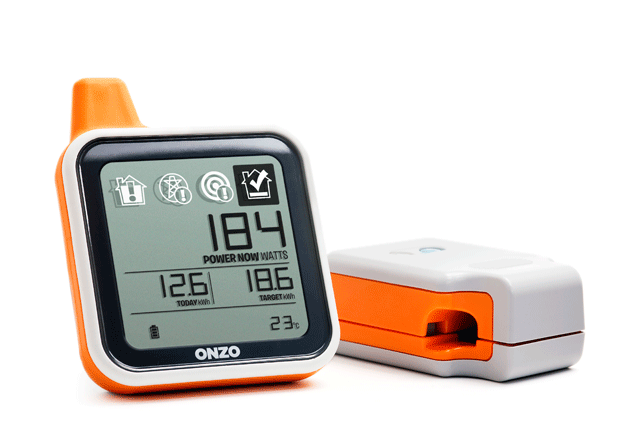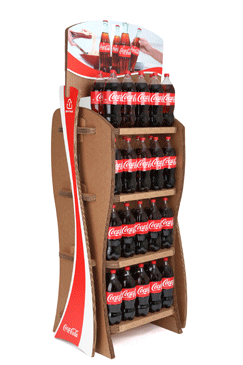In the first of a series of articles, sustainable design specialist Chris Sherwin shares some of his experiences of pushing the boundaries of sustainability over the past 15 years

Onzo’s Zigbee Energy Display gives consumers real-time information about how much electricity they are using and how much it’s costing
Something fascinating is happening around sustainable design. Despite the worst recession since the 1930’s, sustainable design work is not falling away like it did in past recessions or as predicted.
Anecdotally it seems to be on the increase.
For instance, IKEA announced an internal sustainability scorecard to ensure 90 per cent of products sold by 2015 are ‘more sustainable’
Nike released its Environmental Apparel Design Index to promote sustainable design across its industry (amazingly giving away its tool and IP!). Part of Unilever’s Sustainable Living Plan committed to half the total footprint of all their products sold by 2020.
Coke and Pepsi continue to go head-to-head on bio-plastic packaging, with the former announcing a joint venture that will double the UK’s plastic recycling capacity and even licensing its bio-plastic technology to Heinz. Bio ketchup anyone?

Coca-Cola has a number of sustainability initiatives. From the bio-plastic packaging to 100% recyclable point of sale
On the consultancy side, OpenIDEO continues to impress in tackling big sustainability problems through open innovation, whilst IDEO also launched IDEO.org to work in the social sector and in low-income countries. The Co-op reported sales of ‘sustainable designs’ (well, OK, ethical products and services) to consumers are up 18 per cent through the last two recessionary years. This entire sector is valued at £43bn in the UK (bigger than booze and tobacco).
What’s happening here and what’s driving all this stuff?
I’d like to suggest that two main things are behind this. First, this acceleration of sustainable design is primarily led by business. Companies have woken up to sustainability risks and opportunities and have begun to act. A second reason is that sustainability in companies is now all about ‘products’. Lets explore these issues.
Corporate leadership driven
Counter-intuitively, maybe controversially, much of this leadership in sustainable design comes from a handful of quite pioneering global corporations that have strong influence over industrial supply chains. They are all making big commitments and focussing their attention on sustainable product portfolios. Companies like DuPont, GE, P&G, Philips, Panasonic and Unilever have huge programs to drive sustainable products and design.
P&G has a target of $50bn from ‘sustainable innovation products’ by 2012, Philips has a €10bn annual target from ‘green flagship’ product revenues (easily exceeded last year), GE targets $25bn per year from Ecomagination products. This is serious business that undoubtedly drives sustainable design.
The clean & green tech revolution
Additionally, a new generation of green and clean tech start-ups are creating a green economy with sustainability built in.
More disruptive in nature, this clean tech sector, as it’s known, is actually a mishmash of technologies and categories featuring IT and digital, recycling, renewable energy, green chemistry and so on.
Hard to understand as a single entity, you’ll get a good sense of them from the Guardian’s Hot 100 list.
In a few pioneering cases, such clean tech companies have design at their hearts, such as Onzo, CarbonCulture and Airbnb. In general though, design opportunities in clean tech will be more traditional.
As companies commercialise and launch their green technologies and solutions, they will need basic design and engineering skills and services to detail and scale up their products. Autodesk has spotted just this in offering its design software through the Cleantech Partners Program.
So, companies large and small are spotting the opportunities from sustainable products. This is understandable when you consider that the UK low carbon and environmental goods and services sector is currently valued at £117bn and estimated to grow at eight per cent per annum by 2020.
It’s fun times, but it certainly wasn’t always this way. I spent much of my early sustainability years in the late ‘90’s working on production and supply chain, with the drivers mostly being compliance and cost. All still critical, but a far cry from the sustainable design we are now seeing, and that I trained so hard to do.
I always thought sustainability should be about the products and services companies offer. It should be about the design. So, I’m pleased it’s come full circle. I just can’t believe it took so long.
What does this mean for design and you?

Nike has released its own Life Cycle Assessment (LCA) tool for evaluating the impact of apparel – available to anyone at www.nikebiz.com/responsibility
You’ll have noticed I think the leading edge of sustainable design I describe is client driven, not led by the design community.
That makes the client to designer relationship critical and designers will need to get increasingly savvy on sustainability. Seek out potential clients with big sustainable design ambitions, or with sustainable product opportunities.
There will be more sustainable design opportunities out there, but you’ll need to be realistic and targeted to avoid frustration.
Alternatively, try the entrepreneurial route by helping the hundreds of clean tech start-ups with design problems, or tapping into the increasing government funding and investor interest in neat sustainability ideas or new technology.

Chris Sherwin is a sustainability consultant working with brand marketing and design agency Dragon Rouge, as an Associate of Forum for the Future, and independently on sustainable design and innovation.
A product designer by training, he has worked in the field for 15 years, previously holding positions in Philips and Electrolux and consulting, lecturing and teaching widely on the subject. He has a PhD titled ‘Innovative Ecodesign’ from Cranfield University.
Chris can be reached by email at sherwin.stoker@gmail.com or @sherwinchris on twitter.
Chris Sherwin shares how far sustainability has progressed in design over 15 years
No
Default






